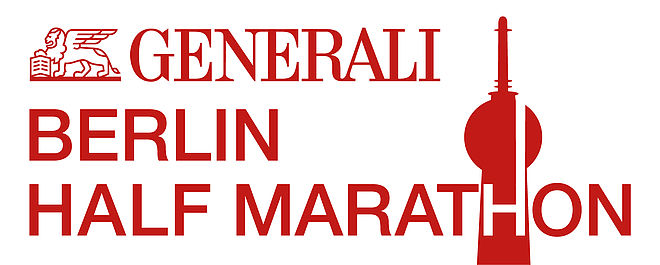The story of the BERLIN MARATHON is a story of the development of road running.
When the first BERLIN MARATHON was started on 13th October 1974 on a minor road
next to the stadium of the organisers‘ club SC Charlottenburg Berlin 286
athletes had entered. 244 runners finished. The first winners were two runners
from Berlin: Günter Hallas (2:44:53), who still runs the BERLIN MARATHON
today, and Jutta von Haase (3:22:01).
It was until 1980 that the marathon route led the runners along the
Grunewald. The maximum participation in those days was 397 in 1976. But already
during the early stages there was a world record. In 1977 the national marathon
championships were held at the event for the first time. Although this race was
not started at the same time of the day. The womens championship winner was
Christa Vahlensieck. The runner from Wuppertal covered the distance in
2:34:47,5. The official winner of the BERLIN MARATHON in 1977 was Angelika
Brandt (3:10:26,8).
It was also in 1977 when there was quite a good mens winning time: British
runner Norman Wilson won in 2:16:20,7. It was the fastest time on the old
course along the Grunewald. But three years later Ingo Sensburg came close. In
1980 the runner from Berlin finished in 2:16:48. Until today he is the only
male runner who won the BERLIN MARATHON three times: 1976, 1979 and 1980.
27th September 1981 was a big day for the organizers of the SC
Charlottenburg. For the first time the BERLIN MARATHON was run through the main
streets of West Berlin. The race was started in front of the Reichstag and
finished on Kurfürstendamm. But it was a hard piece of work for Horst
Milde and his compatriots to convince the citys government and especially the
police to get the allowances. When Milde was introduced to the chief of Berlins
police, he was told: “Roads are for cars only – not for
runners.“
The first winner on Kurfürstendamm in 1981 was British. Ian Ray ran
2:15:41,8, finishing ahead of two countrymen. Angelika Stephan from Kassel
(Germany) won the womens race in 2:47:23,5. 3,486 runners from 30 nations
participated in the race. Quality of the BERLIN MARATHON then improved from
year to year. Suleiman Nyambui was a prominent winner in 1987 and 1988. He was
the first African winner of Germanys biggest and fastest marathon. Numbers of
participants strongly increases from 1981 onwards. 6,270 athletes from 45
nations started in 1983. It was two years later when more than 10,000 entries
were registered for the first time (11,814). Running became more and more
popular in Germany, and hundreds of thousands of spectators lined the streets
on marathon day in West Berlin.
There was nothing that indicated in 1989 that just one year later the BERLIN
MARATHON would have another dimension. The 30th September 1990 was a very
special date in the history of the marathon. Three days before the German
unification the limited number of 25,000 runners ran through Brandenburg Gate
– a lot of them with tears in their eyes. It was also the day when BERLIN
MARATHON established itself among the fastest marathons in the world. Steve
Moneghetti (Australia) ran a world years best of 2:08:16 – the first
world class time in Berlin. It was Uta Pippig, who managed a home win. She ran
2:28:37.
In a race against 1994s winner António Pinto (Portugal) and the
strongest European runner at that time, Vincent Rousseau (Belgium), Sammy Lelei
achieved a remarkable breakthrough in marathon running in 1995. His 2:07:02 was
the second fastest time of all times and the fastest for more than seven years.
He missed the world record by just twelve seconds.
The 25th BERLIN MARATHON in 1998 had a record number of 27,621 athletes who
had entered the race. And the jubilee edition was unexpectedly crowned by a
world record. Ronaldo da Costa ran the race of his life. He clocked 2:06:05
hours and became the first athlete to have run the marathon in an average speed
of more than 20 k per hour.
A year later another world record was broken. This time Tegla Loroupe became
the hero of the BERLIN MARATHON. The outstanding Kenyan distance runner broke
her own world record by four seconds. Loroupe, who is a shining example for
Africas women athletes, ran 2:20:43. The mens winner Josephat Kiprono (Kenya)
ran a world class time of 2:06:44 as well. And there was an Asian record as
well: Takayuki Inubushi became the first Japanese athlete to run sub 2:07. He
finished second in 2:06:57.
In 2001 a Japanese superstar had decided to run the real,- BERLIN MARATHON:
Naoko Takahashi. The aim of the Olympic champion was obvious. She wanted to be
the first woman to run sub 2:20. And finally she was the one to do so.
Takahashi won in 2:19:46. Nearly half of the nation back home watched her
breaking the record as the race was broadcasted live in Japan. After the 11th
September the race had a political dimension as well. The runners held up a
banner before the start. It read “United we Run“ and showed the
symbols of both the real,- BERLIN MARATHON and the New York City Marathon.
A year later Naoko Takahashi was back in Berlin. After injury problems it
was her first marathon since her triumph a year ago and she won again in
2:21:49. Raymond Kipkoech (Kenya) was the fastest with 2:06:47.


